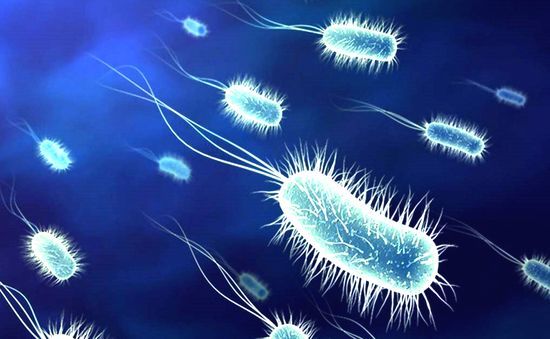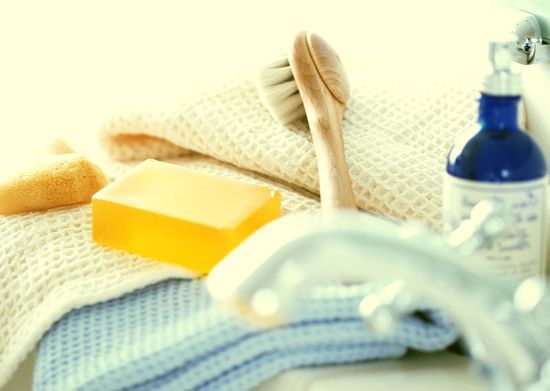Bacteria are present everywhere: in water, soil, air and, of course, the human body. Without these creatures invisible to the naked eye, life simply would not exist. Everything is very simple: bacteria are an integral element of the normal existence of all living things.
The presence of a number of bacteria in the human body is absolutely normal and natural.. What bacteria are pathogenic and what harm can they do to human health?
Types of pathogenic bacteria
Pathogenic bacteria are divided into two large groups:
- ordinary bacteria that are constantly in the oral cavity, intestines, vagina, but due to an increase in numbers, harm a person with a large amount of secretions as a result of vital activity;
- pathogenic bacteria, which in small quantities cause significant harm to human health.
The first group includes bacteria of various types that coexist peacefully in the human body, without showing themselves in any way and without causing harm. But when conditions change (decrease in the protective functions of the body), the environment becomes favorable, active reproduction and an increase in numbers begin, as a result of which the released waste products and poisons poison the human body. For example, for all women, the well-known vaginal thrush, which is caused by the growing yeast bacteria of the genus Candida. With a weakened immune system, drinking a course of antibiotics, a change in hormonal levels, quietly sitting bacteria get out of control, resulting in unpleasant white discharge with a sharp sour smell.
There are also conditionally pathogenic bacteria, which in small quantities are not capable of harming health. But under favorable conditions, against the background of a growing population, diseases arise. For example, ureoplasma is contained in each of us. But not everyone is faced with a dangerous disease ureoplamosis. Even after a positive analysis, this bacterium should be looked at the number of the colony, and not the presence in the body. If there is an increase in the number, then treatment should be prescribed.
The most dangerous bacteria
There are pathogenic bacteria for humans, with which it is necessary to wage a tough fight. It's about:
- about E. coli, which can cause not only food poisoning, diarrhea, vomiting, but also serious diseases of the intestinal tract;
- about spirochetes, the entry into the body of which is fraught with the development of typhus and syphilis;
- about shegella, from which people fall ill with dysentery;
- about mycobacteria that cause many types of tuberculosis and leprosy;
- about mycoplasma and the pneumonia it causes;
- about bacilli, the result of the introduction of which will be tetanus and anthrax;
- about listeria and the development of listeriosis;
- about vibrios and the cholera and vibrosis they cause;
- about clostridia, which provoke the appearance of botulism;
- about pyogenic bacteria that cause sepsis and conjunctivitis;
- about cocci and their varieties (staphylococci, streptococci, meningococci, pneumococci);
- about salmonella, which are dangerous for the development of salmonellosis, paratyphoid fever, typhoid fever.
Naturally, this is not a complete list of pathogenic bacteria, since they are very numerous, but at the same time they tend to change, which greatly complicates the process of combating them.

Ways to fight harmful bacteria
Since ancient times, man has been trying to find control over harmful bacteria, but it is not always possible for him to take control of these insignificant living creatures. The main ways to combat pathogenic bacteria are:
- conducting educational work among the population about diseases that can be caused by various kinds of bacteria (a biology course in schools, lectures, visual and educational methods in the form of posters, memos, warnings);
- the development of bacterial medicine, the identification of methods for the destruction of harmful protozoa, the development of vaccines, sera;
- development of pharmaceuticals;
- development of a conscious attitude to the problem of bacterial infection (timely contacting medical institutions, observing safety precautions and personal hygiene).
Medicine coped and took under strict control many harmful bacteria, such as smallpox, anthrax, plague, but today there is no 100% guarantee that these protozoa will not be able to mutate and appear in new forms.
Preventive measures
No matter how trite it sounds, but each person to some extent can take care of his own safety in terms of malicious protozoa. The importance of compliance with control measures (otherwise preventive) against pathogenic bacteria should not be underestimated. Everything is as simple as twice two, and how many problems are protected from:
- knowledge of hygiene rules and their observance;
- do not violate the vaccination schedule developed by WHO, give children from birth to adulthood, adults should not refuse vaccination against tetanus, as well as all sorts of exotic diseases that can be caught in hot countries;
- drink only from proven water sources;
- independently take care of the quality of water in the house (install filters, boiling, settling);
- observe the heat treatment of meat, fish, do not buy food in unverified places (spontaneous markets, a neighbor from the village brought eggs that can become a source of salmonella), be careful with canned food and expiration dates of goods.
Top 5 Things Bacteria Don't Like
The most common, while quite effective methods of combating pathogenic bacteria, are:
- pasteurization;
- sterilization;
- cooling;
- direct sunlight;
- salty or acidic environments.

Do not forget to add disinfection of premises, fresh air, personal hygiene, boiling. The main thing to remember is that a person cannot recover from pneumonia or tuberculosis on his own, but it is possible to take all possible measures so as not to get sick or let these uninvited guests into your body.
